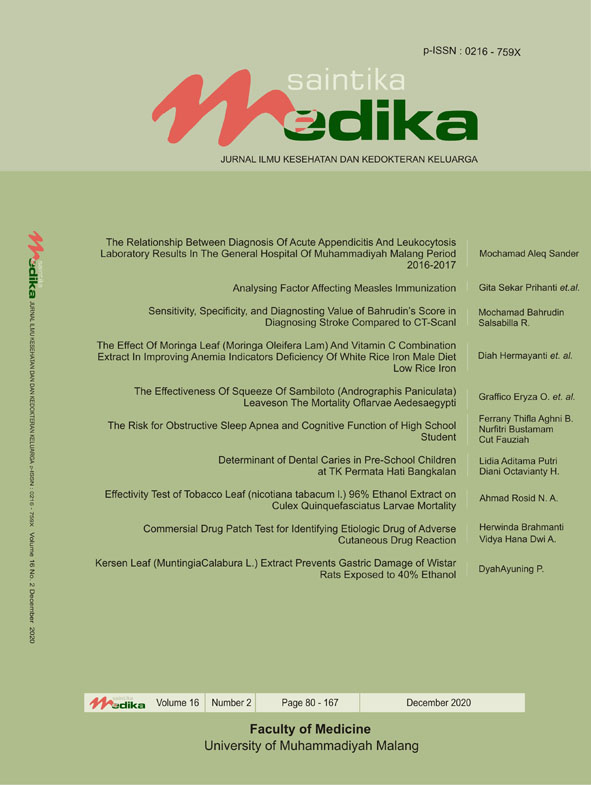Commersial Drug Patch Test for Identifying Etiologic Drug of Adverse Cutaneous Drug Reaction
DOI:
https://doi.org/10.22219/sm.Vol16.SMUMM2.11266Keywords:
commercial drug patch test, adverse cutaneous drug reaction, exfoliative dermatitisAbstract
Adverse cutaneous drug reaction (ACDR) is a challenging condition for clinician, especially in determining the etiologic drug. Identification of etiologic drug become more difficult when the patient consume multiple drugs at once. As cellular immunity response is the main mechanism underlying exanthematous eruption, the most common type of ACDR, patch test rise as the reliable diagnostic modality to find the etiologic drug as this test represent the same mechanism as ACDR. In this paper, we reported commercial drug patch test application testing Griseofulvin, Amoxicillin, Ibuprofen, Aspirin and Clindamycin in 37 years old woman with history of drug induced-exfoliative dermatitis six months ago. Patch test technique involves patient preparations, test drug formulation, test drug patching and evaluation on day 2, 4 and 7. Before doing patch test, patient must not take any corticosteroid or immunosuppressant drug within one month ahead. The suspected drug consist of Griseofulvin, Ibuprofen and Clindamycin. Amoxicillin was chosen as the cross reacted drug for Griseofulvin while Aspirin was chosen as the cross reacted drug of Ibuprofen. All tested drugs were formulated as homogenous powder with 10% concentration and mixed with white paraffin. The formulated drug was patched to patient’s back using 7 mm diameter finn chamber. The evaluation result showed positive reaction towards Griseofulvin and weak positive reaction towards AmoxicillinDownloads
Download data is not yet available.
Downloads
Published
2020-12-29
Issue
Section
Case Reports
License
Authors who publish with this journal agree to the following terms:
- Authors retain copyright and grant the journal right of first publication with the work simultaneously licensed under a Creative Commons Attribution-ShareAlike 4.0 International License that allows others to share the work with an acknowledgment of the work's authorship and initial publication in this journal.
- Authors are able to enter into separate, additional contractual arrangements for the non-exclusive distribution of the journal's published version of the work (e.g., post it to an institutional repository or publish it in a book), with an acknowledgment of its initial publication in this journal.
- Authors are permitted and encouraged to post their work online (e.g., in institutional repositories or on their website) prior to and during the submission process, as it can lead to productive exchanges, as well as earlier and greater citation of published work (See The Effect of Open Access).

This work is licensed under a Creative Commons Attribution-ShareAlike 4.0 International License.
















